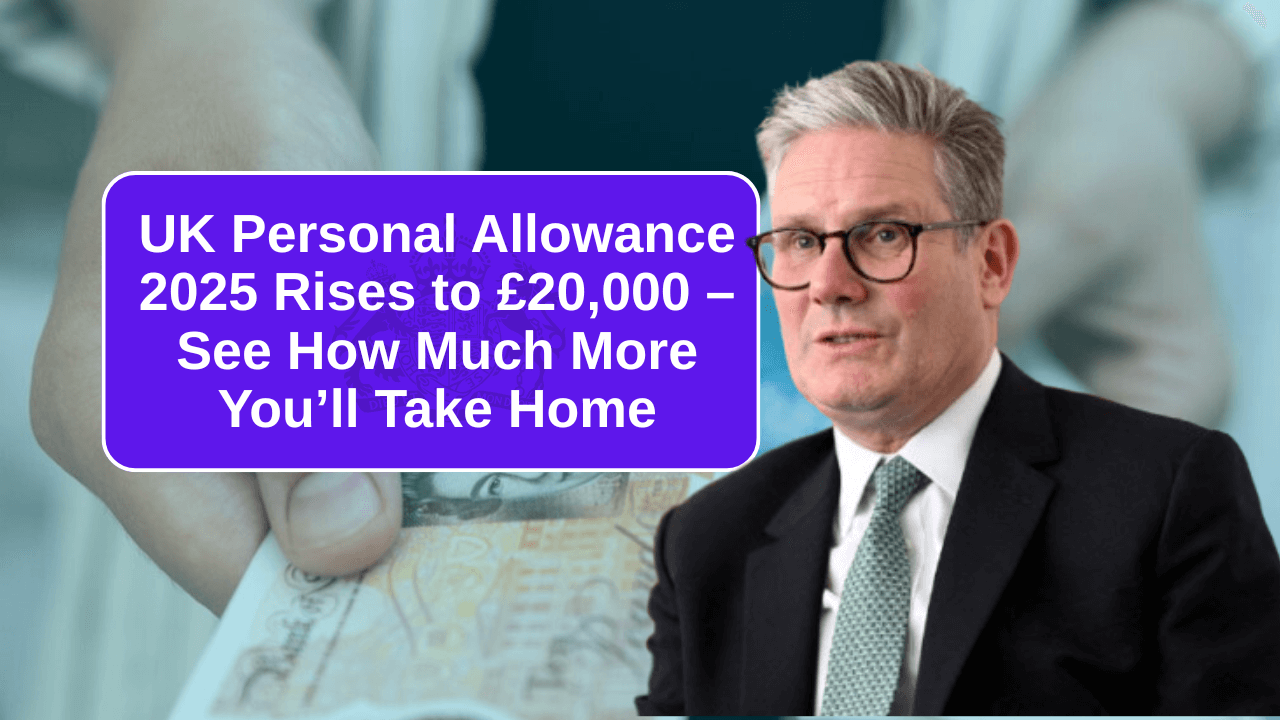UK government has confirmed that the personal allowance for 2025 will rise to £20,000, offering taxpayers more room to earn before paying income tax. This increase could mean hundreds of pounds extra in your pocket each year. In this guide, we break down the changes, explain how they affect different income groups, and provide tips to make the most of your tax-free allowance.
What Is the Personal Allowance?
The personal allowance is the amount of income you can earn each year without paying income tax. For most people in the UK, this allowance determines how much of your earnings are tax-free. Before 2025, the standard personal allowance was £12,570. With the upcoming increase to £20,000, many taxpayers will see a substantial reduction in the amount of income tax they owe.
How the 2025 Increase Will Affect Taxpayers
Raising the personal allowance to £20,000 impacts various groups differently. Here’s a breakdown:
- Basic Rate Taxpayers: Those earning between £20,000 and £50,270 will benefit immediately, as the first £20,000 of their income will now be tax-free.
- Higher Rate Taxpayers: Individuals earning above £50,270 still pay the 40% tax rate on income above the threshold, but the higher allowance reduces their taxable income.
- Low-Income Workers: People previously earning under the prior allowance limit now have even more tax-free earnings, giving them additional disposable income.
Examples of Savings in 2025
To illustrate the effect of the increase, consider the following examples:
- Earning £25,000 per year: Previously, £12,570 was tax-free. You paid 20% tax on £12,430 (£2,486). With the new allowance of £20,000, you pay 20% on £5,000 (£1,000), saving £1,486 annually.
- Earning £40,000 per year: The taxable income decreases from £27,430 to £20,000, reducing your annual tax by £1,486.
- Earning £60,000 per year: Taxable income drops by £7,430, resulting in similar savings.
Who Qualifies for the Increased Personal Allowance?
Almost all UK taxpayers are eligible for the standard personal allowance, including:
- Employees
- Self-employed individuals
- Pensioners with taxable income
- Those receiving benefits that are taxable
Note: Individuals earning over £125,140 have their personal allowance gradually reduced, meaning higher earners may not receive the full benefit of the new allowance.
How This Affects Married Couples and Families
For married couples, the Marriage Allowance lets one partner transfer part of their personal allowance to the other if certain conditions are met. The rise to £20,000 increases the value of this transfer, potentially saving couples even more in tax each year.
Tax Planning Tips for 2025
With the personal allowance increasing, taxpayers can consider strategies to maximise their take-home pay:
- Pension Contributions: Contributing to a pension can reduce taxable income further, saving even more.
- ISA Savings: Investing in tax-free ISAs remains a strong way to protect earnings from tax.
- Marriage Allowance Transfer: Couples can review eligibility to transfer allowances.
- Check Benefits Impact: Some benefits or tax credits may change if taxable income is reduced.
Impact on National Insurance Contributions
While the personal allowance increase affects income tax, it does not affect National Insurance (NI) contributions. Individuals will still pay NI based on earnings above the NI thresholds. Planning for both income tax and NI ensures a complete understanding of take-home pay.
Benefits for Low-Income Households
The personal allowance rise is particularly beneficial for low-income households. People earning near minimum wage may see a larger proportion of their earnings protected from tax, giving them more financial breathing space.
How Employers Will Handle the Change
Employers are responsible for adjusting PAYE (Pay As You Earn) tax deductions. From the 2025-26 tax year, payroll software will reflect the higher personal allowance automatically. Employees should check payslips to ensure the correct amount of tax is being deducted.
Potential Challenges and Considerations
While the increase is largely positive, some points to note include:
- Impact on Tax Credits: Some households may see slight adjustments to tax credits if taxable income changes.
- Higher Earners: Those earning over £125,140 will lose some or all of the allowance.
- Self-Assessment Filing: Self-employed individuals must ensure their tax returns reflect the updated allowance.
Frequently Asked Questions (FAQs)
Q: When does the £20,000 personal allowance take effect?
A: The new allowance applies from the 2025-26 tax year.
Q: Will this increase affect my benefits?
A: Some means-tested benefits may be impacted slightly depending on taxable income.
Q: How much will I save on average?
A: Basic rate taxpayers could save up to £1,486 annually, while higher earners will see proportional reductions in taxable income.
Q: Do pensioners benefit too?
A: Yes, pensioners with taxable income will see the allowance reduce the tax they pay on pensions above the previous limit.
Q: Does this change affect National Insurance?
A: No, NI contributions are calculated separately and remain unchanged.
Conclusion
The increase in the UK personal allowance to £20,000 in 2025 is a significant change for taxpayers across the country. Whether you are a basic rate earner, higher rate taxpayer, or pensioner, this adjustment provides a meaningful boost to take-home pay. Careful planning, awareness of benefits, and making full use of allowances can maximise your financial advantage.
By understanding these changes, UK taxpayers can ensure they retain more of their hard-earned money while remaining compliant with HMRC rules.
